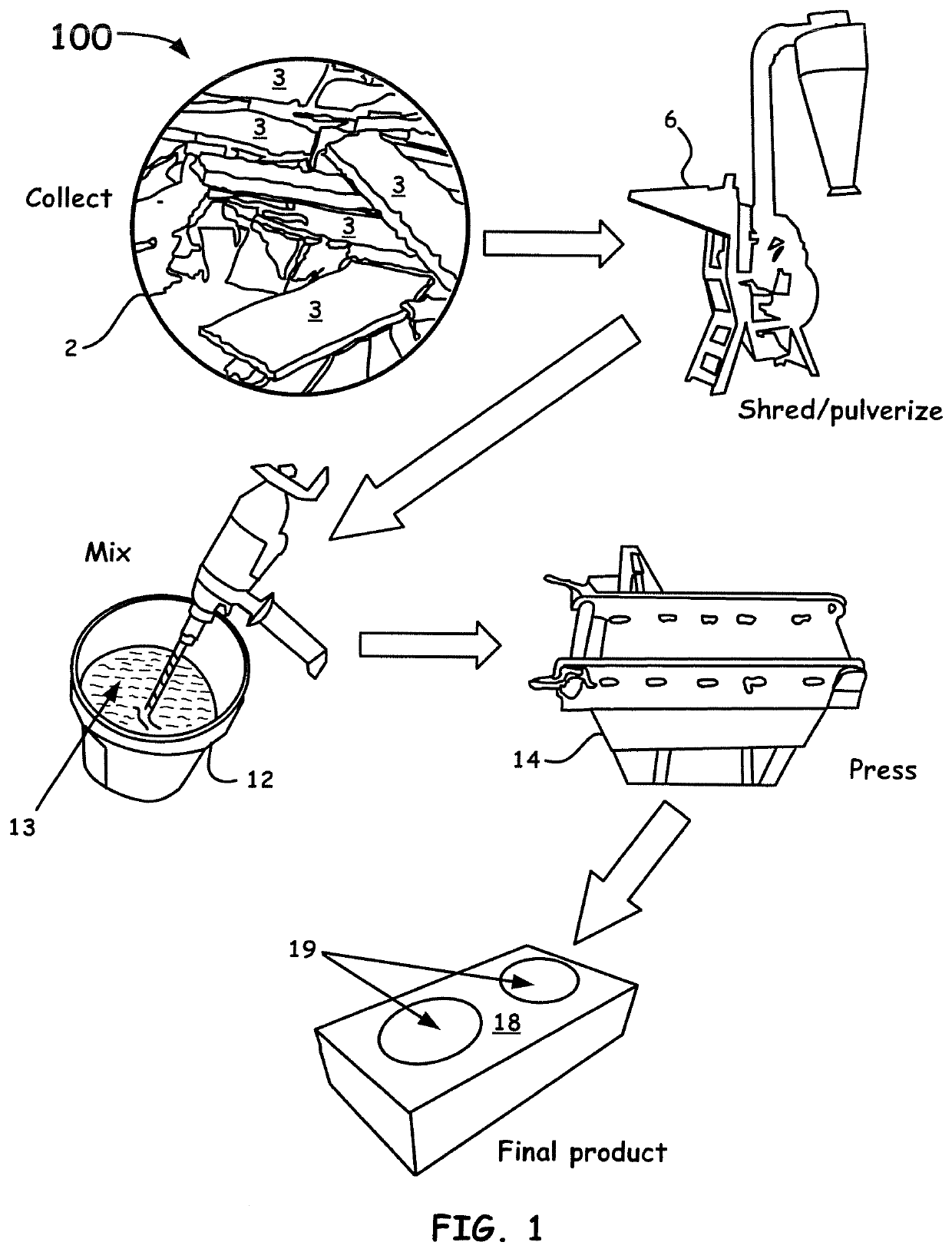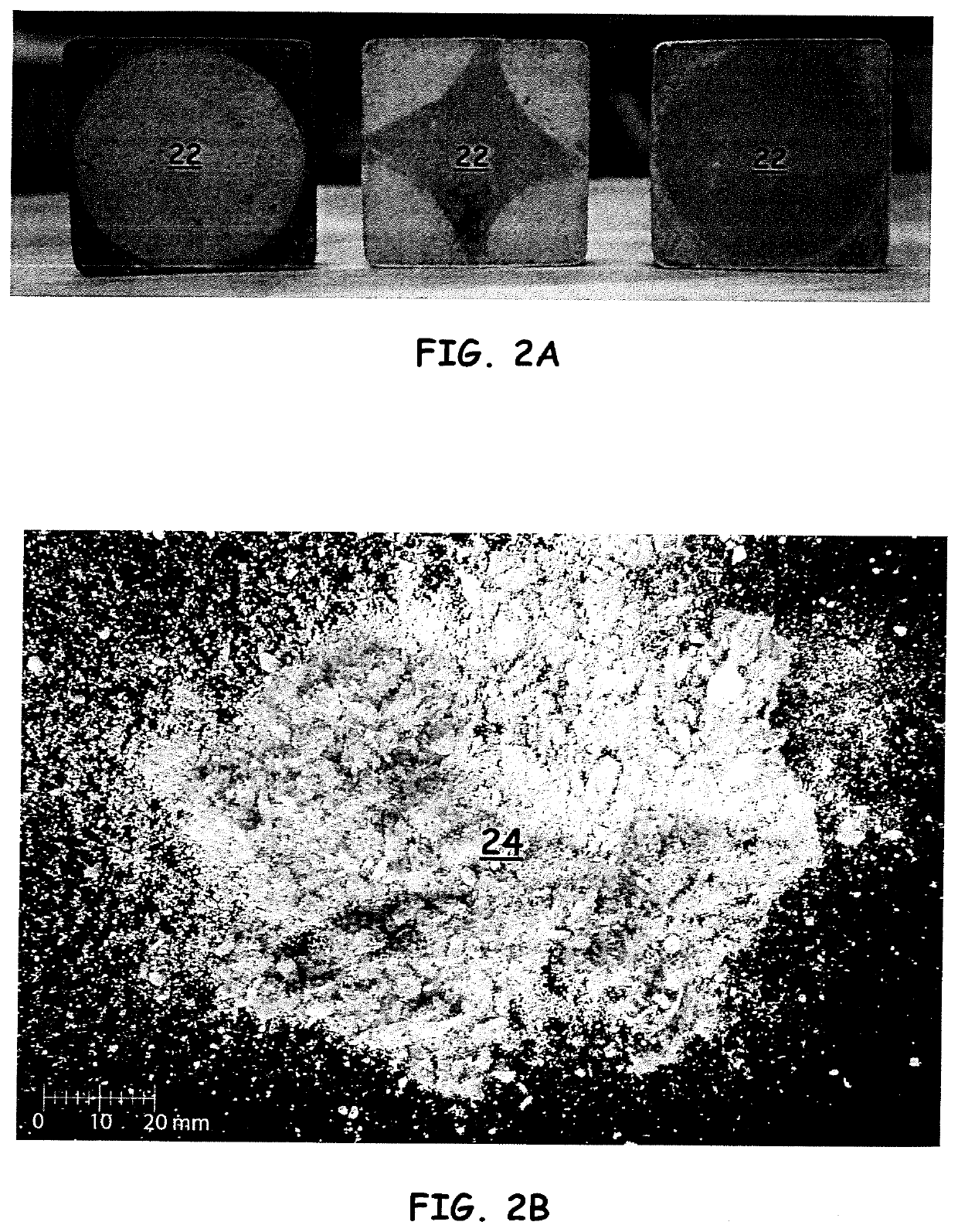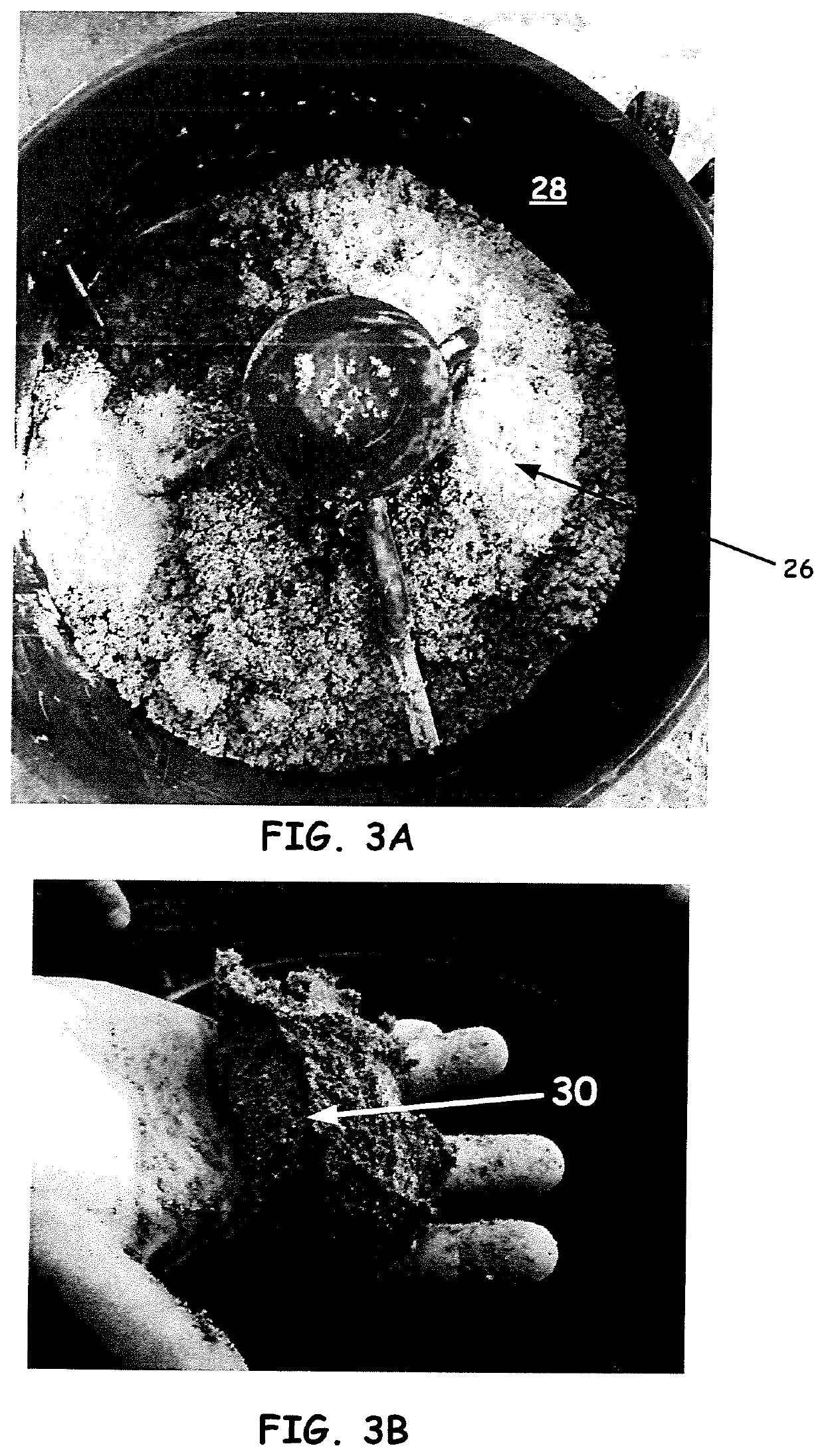A novel masonry material utilizing recycled construction & demolition waste
a technology of construction demolition and masonry, applied in the field of composite mixtures, can solve the problems of significant waste, difficult recycling of c&d waste materials, and growing waste from building construction and demolition, and achieve the effect of simplifying the process
- Summary
- Abstract
- Description
- Claims
- Application Information
AI Technical Summary
Benefits of technology
Problems solved by technology
Method used
Image
Examples
examples
Methods
A. Materials
[0082]Gypsum drywall waste (GW) of ⅜″, ½″, and ⅝″ nominal thickness (approximately 9.5 mm, 13 mm, and 16 mm) was sourced from local building construction and demolition sites. Waste included a variety of drywall types. Demolition waste tested negative for presence of asbestos. Waste was processed using a hammer mill equipped with 5 mm screen, as shown by the image of drywall waste shred 24 in FIG. 2B. Old newspaper (ONP) was sourced from Washington State University Recycling Services, also processed using a hammer mill equipped with 5 mm screen. Portland cement (PC) (ASTM C150 Type I-II) was purchased from local dealer. Ground granulated blast furnace slag (GGBS) (ASTM C989 Grade 100) was supplied by LaFarge North America, manufactured in Seattle, Wash. from slag sourced from JFE Mineral Company, Kurashiki City, Japan. Asphalt emulsion (AE) was purchased from local dealer, sold as driveway and foundation sealer distributed by the Henry Company.
B. Mixing and Formin...
PUM
| Property | Measurement | Unit |
|---|---|---|
| particle sizes | aaaaa | aaaaa |
| particle sizes | aaaaa | aaaaa |
| pressures | aaaaa | aaaaa |
Abstract
Description
Claims
Application Information
 Login to View More
Login to View More - R&D Engineer
- R&D Manager
- IP Professional
- Industry Leading Data Capabilities
- Powerful AI technology
- Patent DNA Extraction
Browse by: Latest US Patents, China's latest patents, Technical Efficacy Thesaurus, Application Domain, Technology Topic, Popular Technical Reports.
© 2024 PatSnap. All rights reserved.Legal|Privacy policy|Modern Slavery Act Transparency Statement|Sitemap|About US| Contact US: help@patsnap.com










